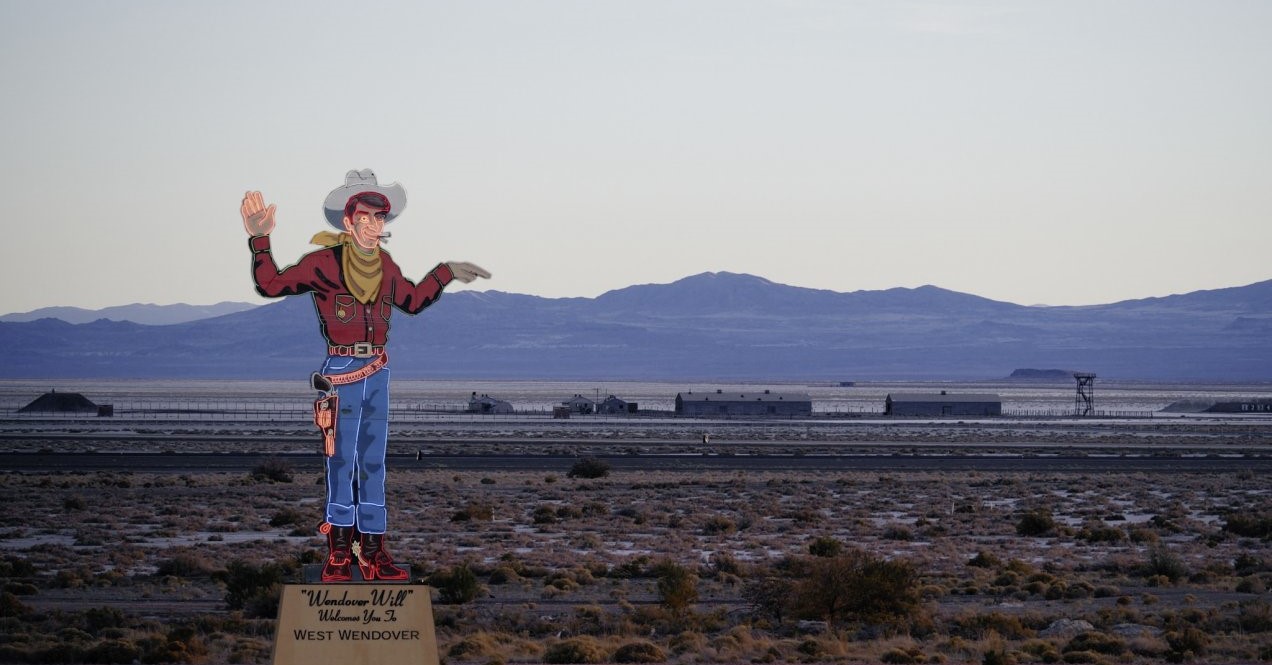Lukas Marxt: How Do We Mediate Haunted Toxicity?
August 25, 2025

A moving image work that engages with the multi-layered histories of land, lake water, and toxicity—histories of remnants and ghosts—must itself be stratified.¹ It must attempt to navigate multiple spatiotemporal scales without losing orientation, and attune to mediating what are, in essence, invisible elemental specters.
Among The Palms The Bomb, or: Looking for Reflections in the Toxic Field of Plenty (2024) delves deeply into the historical-geographical context of the Salton Sea, a milieu that enables the artist to distill the various layers of the region’s lethal toxicity. Chemical pollutants, concentrated in the waters or buried in shallow soils, have devastated the ecosystem and, carried as dust by the wind, extend their reach to distant human settlements. These toxins are residues of multiple human interventions: bomb tests and military maneuvers from World War II and the Cold War to the present day. Freshwater depletion and soil salinization from large-scale agricultural development on Indigenous lands further exacerbate the situation. These practices are entangled with processes of nationalism, capitalism, and colonialism, even as they in turn shape the very forms those processes take. Toxicity becomes not merely a narrative thread but a persistent and lethal presence.
The artist wrestles with a central question: how can one mediate a toxicity that is spectral—difficult to apprehend, yet ever-present and materially destructive?² This spectrality takes form in a recurring figure, a blurred-faced soldier who alternates between drilling and watching, a cipher for the hidden histories of violence and contamination. Media technologies here must assume the responsibility of mediation, rendering the invisible perceptible. Perceptibility and intelligibility, however, unfold in generative ways; Karen Barad would describe the vitality within such an assemblage as “intra-action,” even while resisting the vocabulary of “mediation.”³ Alongside the camera—the most privileged medium—the artist mobilizes his background in environmental science to incorporate instruments such as the metal detector, sonar, drill, and total station. Bomb fragments, for example, surface continually. Such technological interventions, deployed across contexts, negotiate submerged histories and deadly substances with a pronounced media-ethical awareness: drilling here becomes less an extractivist gesture than an invitation.
The artist’s critical engagement with media technologies also provokes reflection on (dis)embodiment, manifest in designs that appear contradictory or uncanny. A gimbal erases the trace of the handheld camera while the sound of footsteps is amplified. Why should media simultaneously locate and erase human presence? The paradox finds sharper articulation in a later scene: in the rented ballroom of a local museum, where wartime popular music loops endlessly and atomic bomb replicas are absurdly displayed, the artist dances with the camera hoisted on his shoulder. Beyond satire of nationalism and military ardor, this scene foregrounds the porosity and intimacy between human and medium. The work suggests that the human–media–geology nexus should be apprehended as a continuum, entangled and indivisible across scales.
Yet, while the artist treats toxicity as a spatiotemporal residue or spectral element, his conceptualization still tends to collapse it into the malevolent legacies of human violence—war, nationalist fervor, internal colonialism, or capitalism—rather than apprehending it as a flow traversing bodies, environments, and temporalities.⁴ The problem persists: how do toxicity, geology, or matter more broadly speak themselves? The film gestures toward this recognition, particularly in the opening sequences where extended landscape shots linger after human actors exit the frame, instead of being inserted abruptly. In those moments, matter itself seems to stir—albeit on scales of time and space beyond human comprehension.
1. Thanks to a complimentary ticket from the dear Ava Witonsky, I was able to see this film at the Anthology Film Archives.
2. The concept of hauntology is drawn from Jacques Derrida, Specters of Marx: The State of the Debt, the Work of Mourning and the New International, trans. Peggy Kamuf (New York: Routledge, 1994), and is complemented by Avery F. Gordon, Ghostly Matters: Haunting and the Sociological Imagination (Minneapolis: University of Minnesota Press, 1997).
3. Karen Barad, Meeting the Universe Halfway: Quantum Physics and the Entanglement of Matter and Meaning (Durham, NC: Duke University Press, 2007).
4. Stacy Alaimo, Bodily Natures: Science, Environment, and the Material Self (Bloomington: Indiana University Press, 2010).
All Rights Reserved © Juntao Yang